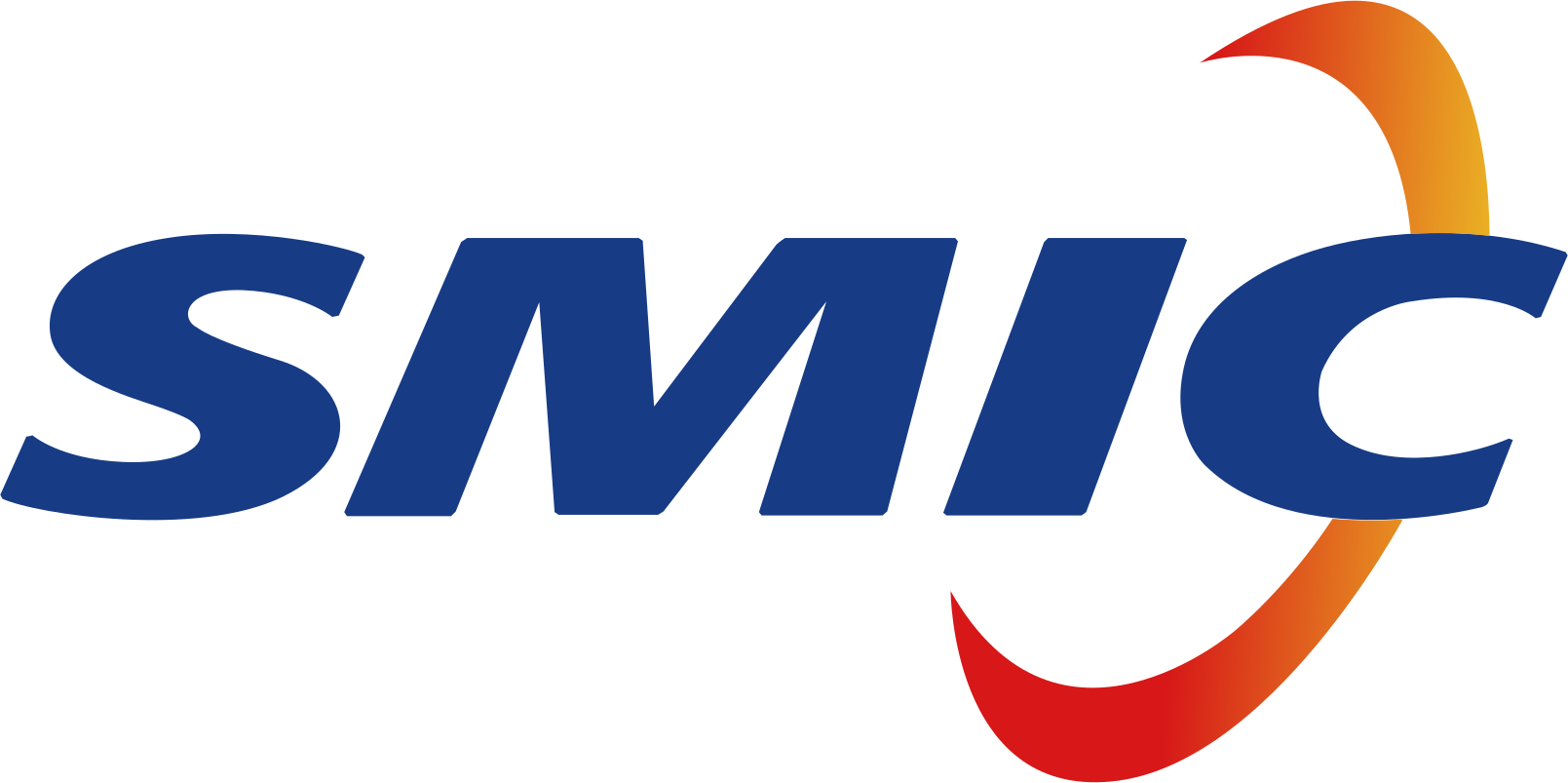SMIC(688981)
Search documents
中芯国际跌0.75%,成交额43.34亿元,今日主力净流入-4.40亿
Xin Lang Cai Jing· 2025-12-09 07:38
2、中芯国际是中国内地技术最先进、配套最完善、规模最大、跨国经营的集成电路制造企业集团。 来源:新浪证券-红岸工作室 12月9日,中芯国际跌0.75%,成交额43.34亿元,换手率1.86%,总市值9305.93亿元。 异动分析 国家大基金持股+中芯国际概念+存储芯片+芯片概念 1、公司获得国家集成电路产业投资基金股份有限公司投资,持股比例占总股本比例为1.61%。 技术面:筹码平均交易成本为121.93元 该股筹码平均交易成本为121.93元,近期该股获筹码青睐,且集中度渐增;目前股价靠近压力位 119.22,谨防压力位处回调,若突破压力位则可能会开启一波上涨行情。 3、2025年9月12日互动易:公司代工MCU芯片和特殊存储芯片。 4、中芯国际集成电路制造有限公司的主营业务是基于多种技术节点和技术平台的集成电路晶圆代工业 务,并提供设计服务与IP支持、光掩模制造等配套服务。公司的主要产品是集成电路晶圆代工、设计服 务与IP支持、光掩模制造。根据全球各纯晶圆代工企业最新公布的2024年销售额情况,中芯国际位居全 球第二,在中国大陆企业中排名第一。 (免责声明:分析内容来源于互联网,不构成投资建议,请投资者根 ...
消电ETF(561310)盘中涨超1.4%,半导体需求复苏带动行业景气度回升
Mei Ri Jing Ji Xin Wen· 2025-12-09 06:45
消电ETF(561310)跟踪的是消费电子指数(931494),该指数从市场中选取涉及智能手机、家用电 器、可穿戴设备等消费电子产品相关业务的上市公司证券作为指数样本,以反映消费电子行业在技术创 新和品牌影响力方面表现突出的上市公司证券的整体表现。 东海证券指出,电子行业需求持续复苏,供给有效出清,存储芯片价格上涨,国产化力度超预期。摩尔 线程登陆科创板,募资主要用于新一代AI与图形芯片研发,展现了我国在自主算力产业持续投入的战 略决心。美光宣布逐步退出Crucial消费级存储业务,专注AI及数据中心等高增长领域,反映出存储芯片 市场供应短缺、价格上行的趋势。当前电子行业结构性机会集中在AI算力、AIOT、半导体设备、关键 零部件和存储涨价等领域。半导体板块方面,国内晶圆厂产能满载,中芯国际三季度产能利用率与ASP 双增,显示行业景气度回升。 (文章来源:每日经济新闻) ...
中芯国际取得半导体结构、形成方法及掩膜版专利
Sou Hu Cai Jing· 2025-12-09 04:21
来源:市场资讯 中芯国际集成电路制造(北京)有限公司,成立于2002年,位于北京市,是一家以从事计算机、通信和 其他电子设备制造业为主的企业。企业注册资本100000万美元。通过天眼查大数据分析,中芯国际集成 电路制造(北京)有限公司共对外投资了1家企业,参与招投标项目53次,专利信息5000条,此外企业 还拥有行政许可225个。 声明:市场有风险,投资需谨慎。本文为AI基于第三方数据生成,仅供参考,不构成个人投资建议。 国家知识产权局信息显示,中芯国际集成电路制造(上海)有限公司、中芯国际集成电路制造(北京) 有限公司取得一项名为"半导体结构、形成方法以及掩膜版"的专利,授权公告号CN114068558B,申请 日期为2020年7月。 天眼查资料显示,中芯国际集成电路制造(上海)有限公司,成立于2000年,位于上海市,是一家以从 事计算机、通信和其他电子设备制造业为主的企业。企业注册资本244000万美元。通过天眼查大数据分 析,中芯国际集成电路制造(上海)有限公司共对外投资了4家企业,参与招投标项目127次,财产线索 方面有商标信息150条,专利信息5000条,此外企业还拥有行政许可446个。 ...
芯片龙头ETF(516640)开盘跌0.38%,重仓股中芯国际跌1.38%,寒武纪跌3.02%
Xin Lang Cai Jing· 2025-12-09 02:21
来源:新浪基金∞工作室 12月9日,芯片龙头ETF(516640)开盘跌0.38%,报1.046元。芯片龙头ETF(516640)重仓股方面,中 芯国际开盘跌1.38%,寒武纪跌3.02%,海光信息跌1.33%,北方华创跌0.43%,澜起科技涨0.02%,兆易 创新跌0.88%,中微公司跌1.47%,豪威集团涨0.02%,芯原股份跌2.06%,长电科技跌0.43%。 芯片龙头ETF(516640)业绩比较基准为中证芯片产业指数收益率,管理人为富国基金管理有限公司, 基金经理为张圣贤,成立(2021-08-19)以来回报为5.16%,近一个月回报为-2.03%。 风险提示:市场有风险,投资需谨慎。本文为AI大模型自动发布,任何在本文出现的信息(包括但不 限于个股、评论、预测、图表、指标、理论、任何形式的表述等)均只作为参考,不构成个人投资建 议。 ...
港股异动 | 芯片股承压走低 华虹半导体(01347)跌超3% 中芯国际(00981)跌超2%
智通财经网· 2025-12-09 01:37
消息面上,据环球网援引媒体报道,美国总统特朗普当地时间8日在社交媒体上发文宣布,美国政府将 允许英伟达向中国出售其H200人工智能芯片,但对每颗芯片收取一定费用。报道称,H200芯片为英伟 达"性能第二强"的芯片。特朗普表示,美方将从相关芯片出口中收取 25% 的分成。他还称,美国商务 部正在敲定相关安排细节,同样的安排也将适用于超微半导体公司、英特尔等其他人工智能芯片公司。 智通财经APP获悉,芯片股承压走低,截至发稿,华虹半导体(01347)跌3.08%,报77港元;中芯国际 (00981)跌2.09%,报70.3港元。 ...
12月8日科创板主力资金净流入27.46亿元
Zheng Quan Shi Bao Wang· 2025-12-08 10:06
沪深两市全天主力资金净流入26.02亿元,其中,科创板主力资金净流入27.46亿元,主力资金净流入的 有263只股,主力资金净流出的有328只股。 主力资金净流入排名 | 代码 | 简称 | 主力资金净流入(万元) | 主力资金流入率(%) | 涨跌幅(%) | 换手率(%) | | --- | --- | --- | --- | --- | --- | | 688256 | 寒武纪-U | 75884.83 | 5.48 | 4.63 | 2.36 | | 688027 | 国盾量子 | 40589.76 | 12.84 | 9.48 | 7.98 | | 688205 | 德科立 | 32527.80 | 11.12 | 13.19 | 13.96 | | 688981 | 中芯国际 | 32042.57 | 5.39 | 2.64 | 2.54 | | 688008 | 澜起科技 | 31163.12 | 8.48 | 3.25 | 2.61 | | 688072 | 拓荆科技 | 26372.84 | 13.68 | 1.70 | 2.25 | | 688195 | 腾景科技 | 25702.08 | ...
南向资金丨小米集团获净买入11.73亿港元
Di Yi Cai Jing· 2025-12-08 10:03
(本文来自第一财经) 南向资金净买入15.40亿港元,小米集团-W、中芯国际、泡泡玛特净买入额位列前三,分别获净买入 11.73亿港元、4.67亿港元、4.32亿港元。净卖出方面,腾讯控股、华虹半导体、中国平安分别遭净卖出 7.62亿港元、2.09亿港元、1.80亿港元。 ...
南向资金 | 小米集团-W获净买入11.73亿港元





Di Yi Cai Jing· 2025-12-08 10:03
(本文来自第一财经) 南向资金今日净买入15.40亿港元,小米集团-W、中芯国际、泡泡玛特净买入额位列前三,分别获净买 入11.73亿港元、4.67亿港元、4.32亿港元。净卖出方面,腾讯控股、华虹半导体、中国平安分别遭净卖 出7.62亿港元、2.09亿港元、1.80亿港元。 ...
南向资金今日净买入超15亿港元 小米集团获净买入居前
Mei Ri Jing Ji Xin Wen· 2025-12-08 09:53
(文章来源:每日经济新闻) 每经AI快讯,12月8日,南向资金净买入约15.40亿港元。小米集团-W、中芯国际分别获净买入约11.73 亿港元、4.67亿港元;腾讯控股遭净卖出7.62亿港元。 ...
上市公司监督管理条例公开征求意见,资金面略有收敛,债市震荡回暖
Dong Fang Jin Cheng· 2025-12-08 09:44
上市公司监督管理条例公开征求意见;资金面略有收敛,债市震荡回暖 【内容摘要】12 月 5 日,资金面略有收敛;债市震荡回暖;转债市场主要指数集体跟涨,转 债个券多数上涨;各期限美债收益率普遍上行,主要欧洲经济体 10 年期国债收益率普遍上行。 一、债市要闻 (一)国内要闻 【何立峰与美国财政部长贝森特、贸易代表格里尔举行视频通话】据新华社,12 月 5 日晚, 中美经贸中方牵头人、国务院副总理何立峰与美方牵头人、美国财政部长贝森特和贸易代表格 里尔举行视频通话,双方围绕落实好中美两国元首釜山会晤和 11 月 24 日通话重要共识,就 下一步开展务实合作和妥善解决经贸领域彼此关切,进行了深入、建设性的交流。双方积极评 价中美吉隆坡经贸磋商成果执行情况,表示要在两国元首战略引领下,继续发挥好中美经贸磋 商机制作用,不断拉长合作清单、压缩问题清单,推动中美经贸关系持续稳定向好。 【吴清:加快打造一流投资银行和投资机构,更好助推资本市场高质量发展】12 月 6 日,中 国证券业协会第八次会员大会在北京举行,证监会主席吴清发表题为《加快打造一流投资银行 和投资机构 更好助推资本市场高质量发展》的致辞。吴清指出,A 股实 ...